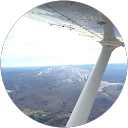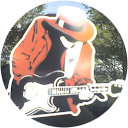 Are you really being protected?
Are you really being protected?
Naturally, we all want to protect our hearing, but how do you know if the headset, headphones, ear plugs etc. you are using are actually protecting you?
The quick answer is that you can check the NRR rating protection. The NRR is the Noise Reduction Rating, and is usually found on the packaging, in the manual or on the hearing protection manufacturer’s website. The NRR rating will typically fall in the range of 20 to 30dB. Basically, the bigger the number, the more noise you’re blocking.
But, and this may sound obvious, your hearing needs protection across the whole range of human hearing frequencies. You or your workers might be have hearing protection that claims 30dB but that in reality only offers protection for one small portion of the range. Some hearing protection may work its best in a noise frequency range that is different from your work noise frequency range exposure. For example, machinists are exposed to high pitch squealing noises while aircraft pilots are more often exposed to bass frequency noise. Make sure you find the chart for your protector so you know if your protector is blocking the right ranges for your workplace environment.
Having trouble figuring out the actual NRR rating on your protector? You’re not alone. Some brands will state ‘blocks/attenuates 30dB of noise’ while the NRR rating is actually around 18dB. How can they do that? They are correctly stating that it blocks 30db. However, they are talking about 30dB at one frequency range. NRR ratings include the whole range of hearing frequencies. So, do your research. If they don’t advertise the actual approval it’s likely it will sound unflattering to their product.
Who Sets the Standards?
NRR product ratings are performed by certified labs. There are different standards in different countries. The US has the EPA and OSHA with concern to hearing protection safety standards. The standards for the US are part of the American National Standards (ANSI). For more information, please visit the OSHA website. There is also the EN 352.1 standard in Europe. While each standard differs slightly, the overall methodology is similar in that the NRR is an estimate based on what will be achieved by as close to 100 percent of users as possible when the hearing protection is properly worn. In other words, the NRR rating is an average that describes how well the average person wearing the hearing protector will be protected.
A Word About Exposure Levels
OSHA states that a work environment can not expose workers to more than 85dB’s of noise for an 8 hour shift. So the goal of hearing protection is to get the worker’s exposure down below that number. Historically it has been said that if your hearing protection blocks 30dB and your environment is 100dB then your fine because 100dB – 30dB is only 70dB and you’re safe. However, more recent studies show that’s not entirely correct. Some manufacturers suggest cutting the NRR rating in half and then subtracting it from the exposure dB number. Others suggest the following.
- Subtract seven from the NRR number, which is given in decibels.
- Divide the result by two.
- Subtract the result from the original noise exposure level in decibels.
In considering the level you need there is a balance needed because there is also such a thing as over-protection. A pilot for example may need to hear certain qualities of the sound of the engines for safety reasons. A factory worker may need to hear certain alarms. So be observant and balanced in your approach and remember to read up on what you’re actually getting.




 The Problem
The Problem Are you really being protected?
Are you really being protected?







